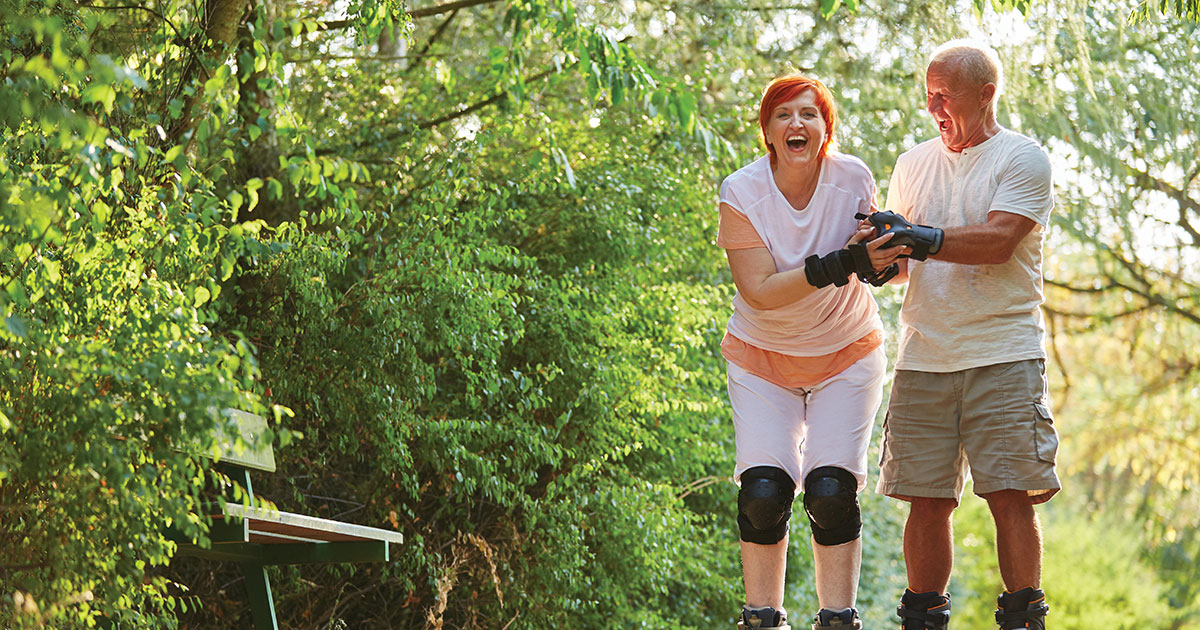The month of August signals “back to school” for many families. Parents and grandparents pay attention to many details in August as they prepare their loved ones for a successful return to educational settings, from preschool to grad school. Just as children need to be prepared to learn, adults need to be prepared for balance and fall prevention. Education can positively change a person’s life and an unwanted fall can negatively change it. A recent article in the Journal of the American Medical Association reported that the number of deaths from falls has increased from 8,613 in the year 2000 to an alarming 25,189 in 2016. While not everyone included in these worrisome statistics are older adults, adults over 65 years of age do have the highest risk for falls (especially those over 75 years of age) and the best potential for decreasing this risk through evidence-based fall prevention programs.
There are several risk factors that influence risk for falls besides age, including medication use, depression, diabetes, dizziness, loss of strength, abnormal blood pressure, and poor balance. This article will focus on balance and the need to “school your body” for better balance. According to the American Physical Therapy Association, a balance problem is an issue that makes it difficult to maintain stable and upright positions when standing, walking, and even sitting. Factors that contribute to balance deficits include muscle weakness, joint stiffness, inner ear problems, certain medications, lack of activity or a sedentary lifestyle, and simple aging. Other more serious conditions, such as stroke or arthritis just to name a few, can also impact balance and the four main bodily systems that work together to maintain postural control (vision, inner ear-vestibular, sensation/proprioception, and musculoskeletal systems). Problems in any one or more of these systems and/or how they integrate can make a person feel unsteady, dizzy, and fearful of performing daily tasks that were once simple and automatic. Sometimes these symptoms occur more often when a person is trying to do more than one thing at the same time or “dual-task.” Examples are trying to walk up or down steps while carrying groceries or turning the head to talk to another person while walking. It is not uncommon for busy adults to talk on the phone, try to unlock the door, hang on to the dog leash, and stay upright all at the same time. If poor balance has resulted in a fall, especially one causing injuries that require medical attention, then an evaluation by a physical therapist (PT) or primary care provider would be a good first step in preventing potential fall-related injuries like fractures, hemorrhaging, or death. A PT can perform a detailed evaluation and determine why falls are happening, along with prescribing individualized exercises. An MD can reconcile medications and check for chronic medical conditions that may be contributing to the overall fall risk.
Should adults care about balance if they have never had a fall? They sure should! Building strength, stronger bones, better flexibility, and better balance can never start too soon. Adding a few challenging balance exercises to a regular workout schedule could make the difference between a fractured wrist and a tumble that can be laughed about with nothing hurt besides pride. It is easy to overlook the need for balance exercise. Most active adults will do strength training, aerobic exercise, and maybe some stretching, but few make an intentional plan to work on balance. Here are some suggestions for general balance exercises to improve the chances of avoiding falls (if you have already had an injurious fall, please see a PT or MD), Practice these in a safe environment like a corner or near a wall or counter:
- Practice standing in “tandem” stance or heel-toe without arm support (shoot for 30 seconds or longer)
- Practice standing on one leg without arm support (shoot for 30 seconds or longer); practice with both the right and left legs
- Stand on a Bosu ball or thick cushion in tandem or on one leg and try for 30 seconds (or just try to increase your time at each practice session)
- Try any of the first three exercises, but shake your head “no” side to side while balancing
- Try any of the first three exercises, but close your eyes.
For any of the balance exercise suggestions, please see a healthcare provider first if you have a fall history or other condition that impacts balance. Always practice balance in a safe environment (near a wall, counter, in a corner or with a friend to spot you). Learning about balance, and working on it, can save your life!
Klaas AH, Lee R, Burns ER. Mortality from falls among US adults aged 75 years or older, 2000-2016. JAMA, 2019; 321 (21):2131-2133.
Moveforwardpt.com: Physical Therapist’s Guide to Balance Problems






















